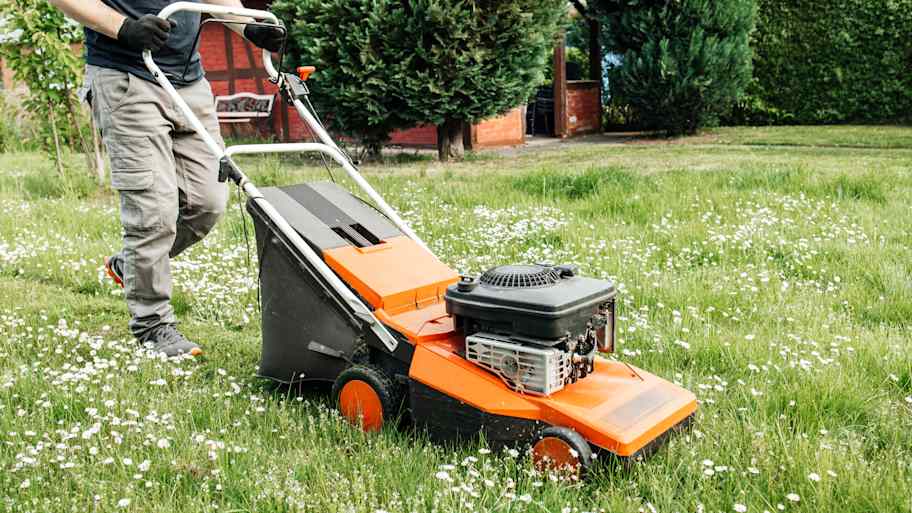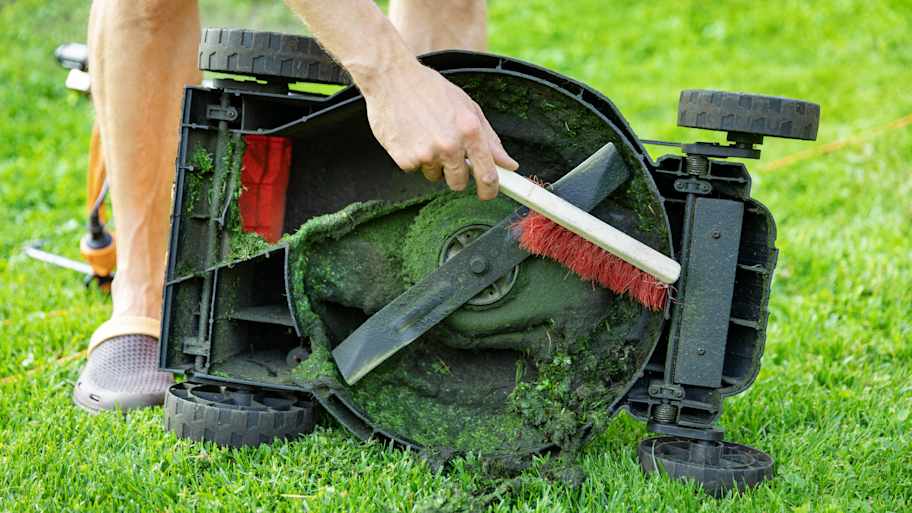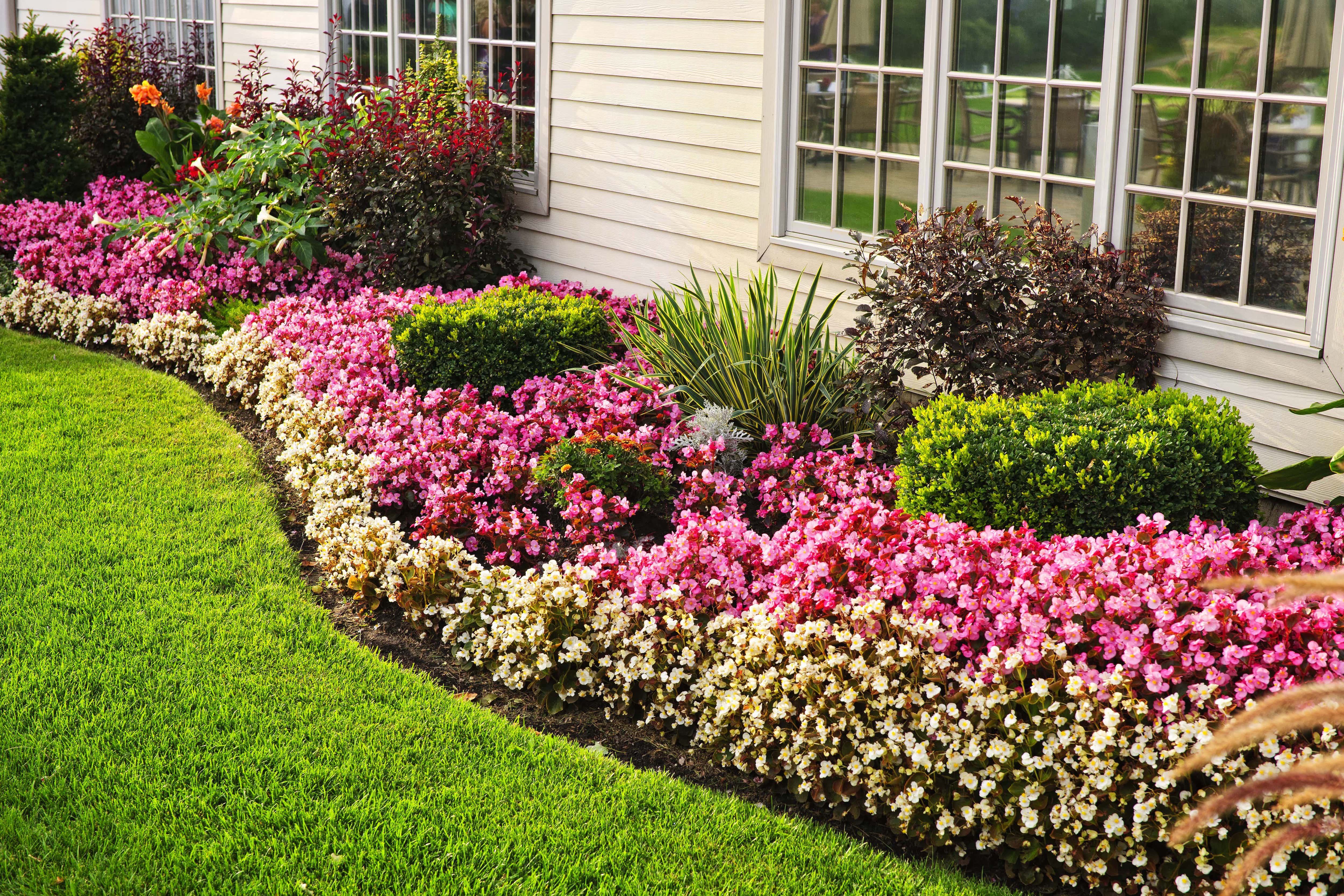
Your total lawn care cost depends on several factors, including the type of service and lawn size. Our guide will cover what you can expect to pay for lawn care.
Give your lawn a glow up


Mowing the lawn sounds simple, until you’re halfway through and realize the grass looks worse than when you started. Whether you’re a first-time mower or a seasoned weekend warrior, the proper techniques can transform your lawn from patchy to polished. Check out these lawn mowing tips for a fresh finish.
Even if you think your blade is good enough, a dull blade doesn't cut grass—it tears it. Worse, that jagged edge is like an open wound, stressing your lawn and opening it up to disease and pests.
If your mower leaves behind brown-tipped grass, it's a clear sign that your blade is overdue for sharpening. You don't have to be a mechanic to get the job done. Most hardware stores offer this service. Just remember: one sharpening per season is the bare minimum.
Before you fire up the mower, take a lap around your yard and clear out sticks, toys, pine cones, rogue flip-flops, and anything else that could turn into a flying projectile when hit by your mower. It’s safer for you, better for your mower, and means you don’t have to stop mid-mow to untangle something from the blade.

Mowing wet grass clogs your machine and can damage its engine. Additionally, it shreds the turf unevenly, compacts the soil underneath, and can even help spread lawn diseases.
Waiting just a few hours after a morning dew or a day after rainfall gives you a cleaner cut and a healthier lawn. You know it’s too soon to mow if your shoes get wet or the wheels leave tracks.
If you are a creature of habit, always mowing in the same direction, you may have noticed that your lawn appears flat with ruts in the soil.
To avoid flattening, upgrade your grass cutting technique by alternating the direction every time you mow, starting with horizontal one week, then vertical the next, and diagonal after that. Switching things up keeps the grass standing upright and encourages even growth.
Cutting your grass too short is the fast track to a burnt, stressed lawn. Here's the thing: Taller grass shades the soil, which means fewer weeds and better moisture retention.
As a rule, avoid removing more than one-third of the blade's height. If you missed several weekends of lawn maintenance and your lawn has grown pretty tall, mow it down gradually over a few days rather than hacking it all off at once.
Instead of bagging those grass clippings, let them stay in place so they can break down and replenish the nitrogen in your soil. Consider it a free, natural fertilizer that encourages healthy microbial activity.
Grass clippings also help retain moisture, much like mulch, so that you can water your lawn less often. This is an ideal tip for drought conditions when watering a lawn regularly may be prohibited.
Edging is the secret step for creating a polished lawn, and it is best saved as the last step. Doing it after mowing ensures you don’t double your effort and helps create clean, defined borders around sidewalks, driveways, and garden beds.
You can use a string trimmer, edging tool, or just channel your inner perfectionist and go at it with grass shears.
Accidentally pouring gas on grass is guaranteed to kill a section of your yard while contaminating your soil. Whether you are fueling up before you start or mid-mow, do it on your driveway or in a non-grassy area.
While mowing at high noon feels productive, it’s one of the worst times to fire up a mower on a hot, sunny afternoon. The combination of scorching sun and freshly cut grass can cause significant stress to your lawn.
Each blade of grass is like a tiny leaf, and when you trim it, you expose the tender inner tissue to intense heat and UV rays. That can cause browning, wilting, and in some cases, even scorch marks. Hot, dry conditions also dry out the soil faster, so the roots below won’t get the moisture they need to recover.

Your mower works hard, so you don’t want it to suffer under a crusty layer of dried clippings. Grass and debris can cake up under the deck, dull your blade, block airflow, and leave your lawn uneven. Worse, all that gunk traps moisture and invites rust.
After each mow, take a few minutes to clean off the underside of the deck. A stiff brush will do the trick, or a gentle spray from a garden hose works too, as long as you avoid soaking the engine or any electrical parts. Think rinse, not pressure wash.
Mowing the lawn is a chore, especially if it resembles a jungle, if your mower is not powerful enough, or if you prefer to spend your weekends doing anything else. Working with a local lawn care specialist ensures a well-manicured and healthy lawn, as they utilize the right tools and techniques.
Homeowners can expect their lawn care costs to range from $30 to $65 per hour, with lawn mowing costs between $50 and $250, depending on the size of your yard and the labor costs in your location.
From average costs to expert advice, get all the answers you need to get your job done.

Your total lawn care cost depends on several factors, including the type of service and lawn size. Our guide will cover what you can expect to pay for lawn care.

How much it costs to rent a lawn aerator depends on what kind you rent and how long you rent it for. Read on for the full details.

The cost to reseed a lawn can vary depending on the size of your yard and the condition of the soil. We’ll help you figure out the true cost of reseeding or overseeding your lawn, along with whether or not you should hire a professional.
Fertilizer burns can result in discolored or dead grass. These nine tips will help prevent lawn burn and keep your yard looking healthy and green with fertilizer.

Wondering how to stop grass from growing into your flower beds? Use these four helpful methods for keeping your grass in the right place.

Discover the average flowerbed installation cost, key price factors, and tips to save on your landscaping project for accurate planning.